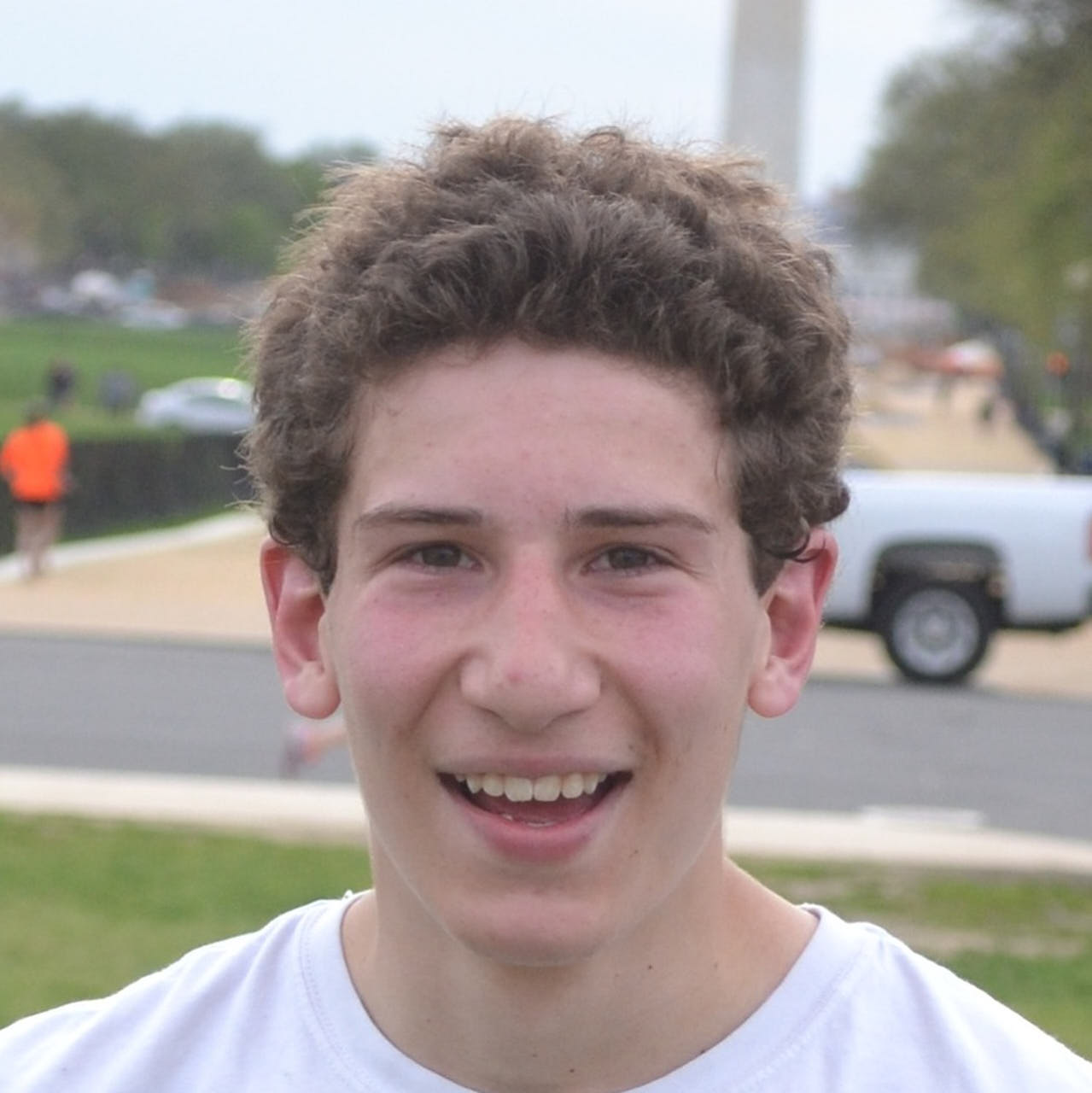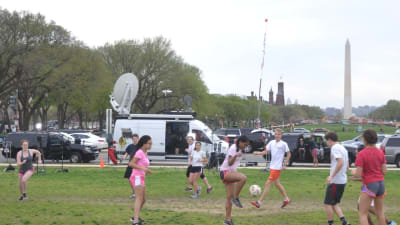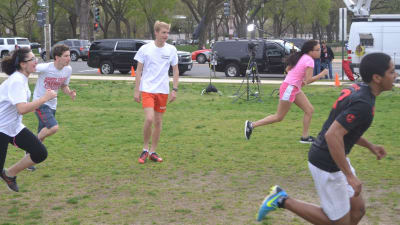“RunaRound”: A Primer
From the outside, our game doesn’t seem very different from others all over the country. Twenty-four teenagers, chasing a soccer ball back and forth across a field yelling out for a pass, or a shot, and cheering each other on. But if you look a little deeper, the Monday evening games we call “Runaround” are entirely unique.
How many soccer games are played on the National Mall, right between the Washington Monument and the U.S. Capitol? How many other kids are using the game to blow off steam after a day of meeting officials from an embassy, or the State Department, or the White House? How many are going to go back home after the game to eat with their team, discussing the events of the game alongside international political issues and moral dilemmas?
But the environment that surrounds Runaround isn’t the only thing that makes it special. Here at SEGL we talk about “narrowing your gap,” not being satisfied with how good you are now, but focusing on where you want to be in the future. Many of our group projects, English papers, and case studies focus on this idea. Runaround lets each person narrow their gap in some way. Maybe you’re already good at soccer (or ultimate frisbee, or capture the flag, or running to the Lincoln Memorial and back) and need to work on teamwork or good sportsmanship. Maybe you’ve never kicked a ball in your life, but want to build the confidence to throw yourself at one to help out your team. Or maybe you just want to be in better shape.
You can improve any of these skills during Runaround, and nobody helps you improve more than a batch of SEGLettes.








